
Why perform indoor air measurements?
La qualité de l’air intérieur (QAI) est un enjeu majeur pour la santé et le bien-être des personnes qui passent beaucoup de temps dans des environnements clos, comme les établissements recevant du public (ERP), les écoles, les transports, etc. La QAI peut être affectée par les émissions extérieures, mais aussi par les activités humaines, les matériaux de construction, le mobilier, les produits de décoration etc. En France, la surveillance de la QAI dans certains ERP est une obligation réglementaire depuis la loi n°2010-788 du 12 juillet 2010.
It must be carried out every 7 years by the establishment’s owner or operator and includes:
- an annual assessment of building ventilation systems;
- an indoor air quality self-diagnosis (at least every 4 years);
- a campaign to measure regulated pollutants such as formaldehyde, benzene, carbon dioxide (CO2) and, in some cases, tetrachloroethylene (or perchloroethylene);
- drawing up an action plan to improve indoor air quality.
The current regulatory surveillance was revised by the 4th National Environmental Health Plan (2021-2025) “One environment, one health” and came into force on January 1, 2023. In particular, it provides for:
- a measurement of carbon dioxide concentration as part of the annual assessment of ventilation systems;
- key stages in the life of the building that may have an impact on indoor air quality;
- a threshold for triggering pollutant measurement campaigns, and the deadlines for their completion.
There are many sources of volatile organic compounds (VOCs) in indoor air. VOCs are organic compounds that can easily be found in gaseous form in the earth’s atmosphere. They constitute a very broad family of compounds, and have the particularity of having a very low boiling point, which gives them the ability to spread more or less far from their place of emission, resulting in direct and indirect impacts on animals and nature.
VOCs can be of anthropogenic origin (from refining, evaporation of organic solvents, unburned, etc.) or of biotic origin. VOCs can be defined according to their use: solvent, degreaser, preservative, cleaning agent, etc.
Sources of VOCs in indoor air can include the following:
- Maintenance and cleaning products: certain household products, such as detergents, cleaning products and air fresheners.
- Construction and finishing materials: certain materials such as paints, varnishes, glues and carpets.
- Furniture and objects: certain items such as mattresses, cushions and toys.
It’s important to note that each of these sources emits very few VOCs, but their accumulation can create a problem in terms of overall final concentration (total VOCs or TVOCs) in indoor air.
Some examples of indoor air measurement applications are listed below:
- Indoor public spaces such as communities, schools and museums
- Indoor air quality monitoring measures in public buildings (LAB REF 30)
- Sick Building Syndrome (SBS), Permanent or occasional odors
- Measurements in sensitive establishments
- HQE, BREEAM, INTAIRIEUR, WELL, LEED building certifications
What compounds are measured in indoor air?
TERA Environnement offers analysis of a wide range of chemical contaminants.
TERA Environnement can analyze over 500 VOCs, including
- Aromatic and aliphatic hydrocarbons, including BTEX
- TPH (Total Petroleum Hydrocarbons) fractions from C5 to C16
- Oxygenates including methanol, phenol and cresols :
Methanol; Ethanol; Tert-butanol; 1-Butanol; 1-Propanol; 2-Butanol (Sec-Butanol); 2-Propanol (IPA); Isobutanol; Phenol; o-Cresol; m-Cresol; p-Cresol etc.
- Volatile Organic Halogenated Compounds or Halogenated VOCs :
Vinyl chloride monomer (VCM); Dibromomethane; Trichloromethane (Chloroform); Tetrachloromethane (CCl4); 1,2-Dichloroethane (1,2-DCE); 1,1-Dichloroethylene; Cis 1,2 Dichloroethylene; 1,1,1 Trichloroethane ; Trichloroethylene; Tetrachloroethylene (Perchloroethylene); 1,2-Dichloropropane; Trans 1,3 Dichloropropene; Cis 1,3 Dichloropropene; Trans 1,2 Dichloroethylene; 1,1,2-Trichloroethane; 1,1 Dichloroethane; Chloroethane
- Mercaptans and sulfur compounds :
Tert Butanethiol ; Méthanethiol ; Ethanethiol ; 1-Propanethiol ; 2-Propanethiol ; 1-Butanethiol ; 2-butanethiol ; Diméthylsulfure (DMS) ; Disulfure de Carbone (CS2) ; Diméthyl Disulfure (DMDS) ; Diméthyl Trisulfide (DMTS).
- Formaldehyde; Acetaldehyde; Acrolein; Propanal; Butanal; Benzaldehyde; Isopentanal; Pentanal; Hexanal; 2-Butenal; Acetone
- Acid gases :
Hydrogen sulfide (H2S); Ammonia (NH3); Hydrochloric acid (HCl); Hydrofluoric acid (HF); Total cyanides; Sulfur dioxide (SO2); Nitrogen dioxide (NO2); Nitrogen monoxide (NO) etc.
- Volatile fatty acids :
Acetic acid; Valeric acid; Isovaleric acid; Butyric acid; Isobutyric acid; Propionic acid
- Amines :
Allylamine; Diethylamine; Dimethylamine; Dipropylamine; Ethanolamine (2-aminoethanol); Ethylamine; Methylamine; N-Butylamine; Triethylamine; Trimethylamine
PM 10 PM 2.5
- Bis (2-ethylhexyl) Phthalate ; Di-Octyl Phthalate ; Butylated hydroxytoluene (BHT) ; Dimethyl Phthalate ; DiHeptyl Phthalate ; Texanol Isobutyrate (TXIB) ; Diethyl Phthalate (DEP) ; Diisobutyl Phthalate (DIIP) ; DiButyl Phthalate (DBP) ; Benzyl-Butyl-Phthalate (BBP)
- N-Nitrosopyrrolidine (NPYR) ; N-Nitrosopipéridine (NPIP) ; N-Nitrosométhyléthylamine (NMEA) ; N-Nitrosodiéthylamine (NDEA) ; N-Nitrosomorpholine (NMOR) ; N-Nitrosodipropylamine (NDPA) ; N-Nitrosodiméthylamine (NDMA) ; N-Nitrosodibutylamine (NDBA)
What sampling methods are available for your indoor air measurements?
TERA Environnement can supply and/or rent the sampling media and equipment needed for the analyses you require.
- Radiello® (code 130; code 141; code 145; code 147; code 165; code 166; code 168; code 169; code 170; code 172)
- SKC passive badges for gaseous mercury
- Ogawa for NOx
Passive samplers are used for on-site exposure between 8 hours and 7 days, and do not require the use of sampling pumps.
- Impregnated filters
- DNPH cartridges
- Thermodesorption tube
- Hopcalite tubes for mercury vapor, Thermosorb/N tubes for nitrosamines
- Bubbling solutions
- Canisters
Active samplers are used in conjunction with sampling pumps, and are designed for measurements lasting from a few hours to a day.
- Pumps
- Bubblers
- Veriflow for canister sampling
- PM 2.5 PM 10 impactors
Which parameters are available under COFRAC Indoor Air accreditation?
TERA Environnement is COFRAC accredited in Indoor Air for VOCs, aldehydes and acids.

Consult our scopes of accreditation: Accréditation Cofrac Essais 1-5598 et 1-5599, list of sites and scopes available on www.cofrac.fr/en
Scope of our Crolles laboratory: 1-5598 Fuveau laboratory: 1-5599 Scope of our Fuveau laboratory: 1-5599
- Benzene; Toluene; Ethylbenzene; o-Xylene; (m+p) Xylene (Pack BTEX) and 1,2-Dichloroethane (1,2-DCE) on passive sampler Radiello code 145
- Formaldehyde; Acetaldehyde; Benzaldehyde; Pentanal (Valeraldehyde); Propanal and Hexanal on Radiello passive support code 165
- Nitrogen dioxide (NO2) on passive sampler Radiello code 166
- Ammonia (NH3) on passive sampler Radiello code 168
- Hydrogen sulfide (H2S) on passive sampler Radiello code 170
- Nitrogen Monoxide (NO) and Nitrogen Dioxide (NO2) on Ogawa passive sampler
- Benzaldehyde; Pentanal (Valeraldehyde); Propanal; Formaldehyde; Hexanal; Acetaldehyde on D-S10L tube
- Benzene, Toluene, Naphthalene and total VOCs on GAS thermodesorption tube
- Total VOC on TTA thermodesorption tube
- Nitrosamines: N-Nitrosopyrrolidine (NPYR); N-Nitrosopiperidine (NPIP); N-Nitrosomethylethylamine (NMEA); N-Nitrosodiethylamine (NDEA); N-Nitrosomorpholine (NMOR); N-Nitrosodipropylamine (NDPA); N-Nitrosodimethylamine (NDMA); N-Nitrosodibutylamine (NDBA) on Thermosorb/N tube
Building certifications: HQE, BREEAM, INTAIRIEUR, WELL, LEED,...
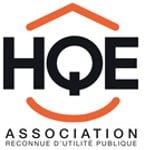
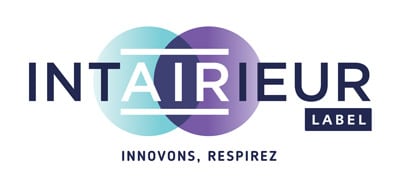



Les certifications sont délivrées par des organismes indépendants qui évaluent les performances du bâtiment selon un référentiel. Les critères de ces référentiels visent à réduire l’empreinte carbone du bâtiment, à améliorer la qualité de l’air, à optimiser la gestion des ressources et à diminuer la consommation d’énergie. Les certifications sont reconnues par le grand public et les investisseurs comme un gage de durabilité et de confort.
TERA Environnement can help you with air quality issues, providing you with the samplers and air analyses required to obtain these certifications.
Identifying sources of indoor air contamination
Total VOC formaldehyde outgassing from a material – In situ measurements
TERA environnement propose des badges passifs permettant des mesures in situ. Ces badges sont placés directement sur la surface du matériau émissif. Les mesures employant ces badges ne sont pas destructives.
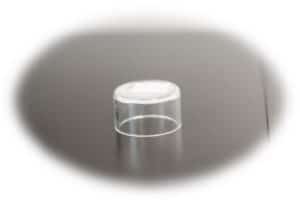
Passive badge for measuring
formaldehyde emission
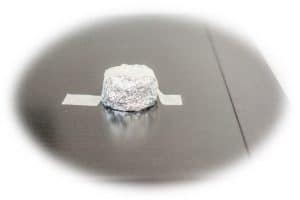
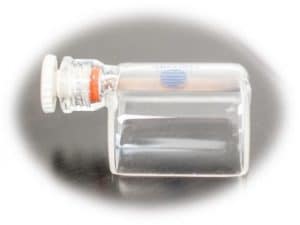
Passive badge for measuring
total VOC emissions
Screening of molecules outgassed by a material (VOCs, aldehydes, acids bases) – Laboratory measurements

Material outgassing is the method of choice for determining the source of contamination, characterizing material emissions and taking preventive or curative action. Le matériau est placé à l’intérieur de la micro-chambre de dégazage et est balayé par un flux d’air.
The appropriate sampler is placed at the micro-chamber outlet to target the molecules of interest (e.g. bubbler for acids or tubes for VOCs).
These measurements are carried out in the laboratory and are destructive.
Material labeling in accordance with the April 19, 2011 order

The labeling of materials in accordance with the Order of April 19, 2011 is a measure designed to inform consumers about the level of emissions of volatile substances into indoor air, presenting a risk of toxicity by inhalation, on a scale ranging from A+ (very low emissions) to C (high emissions).
The substances or groups of substances concerned are those defined in article R. 221-27 of the French Environment Code, such as formaldehyde, toluene, xylene, etc.

